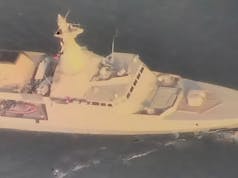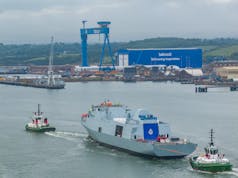NATO’s Standing Naval Forces have taken part in the Alliance’s largest military exercise of the year, Exercise Steadfast Dart 2025, testing the operational deployment of the Allied Reaction Force (ARF) in the Aegean Sea, according to a NATO press release.
The exercise, which ran from 10–17 February, saw participation from Standing NATO Maritime Group 2 (SNMG2) and Standing NATO Mine Countermeasures Group 2 (SNMCMG2). It marked the first large-scale deployment of the ARF, testing NATO’s new operational doctrine aimed at enhancing collective defence capabilities and bolstering interoperability among Allied naval forces.
SNMG2 included naval units from France, Greece, Italy, Spain, and Türkiye, supported by personnel from the United Kingdom and Bulgaria. Ships involved in the exercise included the flagship TCG Kemalreis, FS Commandant Birot, HS Kountouriotis, ITS Thaon di Revel, ESPS Álvaro de Bazán, and ESPS Patino, alongside HS Limnos and other ARF units.
More than 1,000 personnel participated, engaging in anti-submarine warfare, air defence drills, maritime interdiction operations, and naval gunfire support exercises.
The task group also conducted replenishments-at-sea, testing both ship-handling and logistical capabilities under challenging weather conditions. “SNMG2 accomplished its mission in the first ever ARF exercise and enhanced vigilance activity through Exercise Steadfast Dart 25, demonstrating once again the leverage of having a standing naval force at sea at all times,” said Rear Admiral H. Ilker Avci, Commander of SNMG2.
Meanwhile, SNMCMG2, led by the flagship TCG Yüzbaşı Güngör Durmuş, along with TCG Ayvalık and FS Capricorne, focused on mine countermeasure (MCM) operations. These drills aimed to ensure the protection of vital sea lines of communication (SLOC) and hone response strategies for dive accidents and asymmetric threats.
Turkish Navy Captain Kürsat Kurnaz, Commander of SNMCMG2, underscored the significance of the operation: “Exercise Steadfast Dart 25 provided a dynamic and challenging environment where NATO forces refined their coordination and tactical proficiency. The operation highlighted the adaptability of multinational teams, reinforcing strong partnerships and ensuring seamless cooperation across different domains.”
During the exercise, SNMCMG2 carried out mine detection and neutralisation, highlighting the critical role of interoperability in maintaining maritime security. “By training together, we enhance our readiness to maintain maritime security and send a clear message of strategic deterrence to any potential threat. We are always ready to keep the routes clear,” Captain Kurnaz added.














We used to lead these things….RN was the gold standard for ASW and MCM…..and now?
We have run out of ships to send….just when that skill is needed the most.
I am making a good salary from home $4580-$5240/week , which is amazing under a year ago I was jobless in a horrible economy. I thank God every day I was blessed with these instructions and now its my duty to pay it forward and share it with Everyone, Here is I started_______ Www.Earn54.COM
Until 2010 a RN frigate or destroyer or MCMV was a permanent fixture of every NATO standing naval group and large exercise. Now it’s all too often just a few P2000’s patrol craft, some HQ staff, and a few “experts” (who in practice are just trying to maintain their skills). How the once mighty have fallen. In practical terms (i.e. excluding SSBN’s) the French, Italian and Turkish navies are all larger than the RN, the Spanish navy is similar in size, and the German navy is set to rapidly catch up. Arguing that the RN has SSN’s is irrelevant when often only one is operational and its busy with not only protecting the SSBN’s and QEC, but is also tasked with covering the whole world for deterring hostile maritime activities, intel, land attack, ASW … !!!
I totally agree.
We are living off past investments have been cashed in!